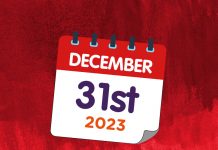The REACH regulation has reached another significant goal: The registration for phase-in substances had its final deadline at the end of May 2018.
The collected data represent one of the largest databases on chemical substance properties in the world. It provides the basis for implementing one of the key goals of REACH: “… ensure a high level of protection of human health and the environment”.
Tasks beyond registration
Dossiers and substances are subject to evaluation. Echa has been evaluating dossiers and member states have been evaluating substances for several years already. The Community Rolling Action Plan (Corap) list of substances contained 352 entries as of 12 June 2018, and actions are already ongoing for 21 for the rest of 2018, 44 and 47 are scheduled for 2019 and 2020, respectively.
Echa pays special attention to substances that are likely to have hazardous properties and also have the potential for significant exposure as well as substances where hazards and exposure are uncertain.
Companies are therefore advised to keep their dossiers up-to-date and check for uses that might not be relevant any more. Further, read-across and QSAR justifications in a dossier should also be checked for accuracy, since this might also be a target that determines further regulatory action.
In summary, a registration dossier is not a static piece of work; it needs continuous care.
Substances of very high concern
In case a substance is identified as a substance of very high concern and listed on the candidate list, there are communication obligations for all participants in the supply chain if concentrations of the substance are above 0.1% in mixtures or articles. For substances and mixtures the standard communication format is the safety data sheet (SDS). For articles declarations are required, however there is no standard form.
Substances on the candidate list may become subject to authorisation. Companies need to decide whether they want to apply for an authorisation or whether there is a possibility to substitute the substance with less hazardous alternatives. The authorisation process is a complex, time- and money-consuming process without any guarantee of success.
REACH can also restrict specific uses of substances in cases where authorities consider uses are not without risk. Registrants and downstream users are therefore advised to keep an eye on changes in the Annex XVII, which lists all restrictions.
Registrations
Substances that enter the EEA market for the first time at above one tonne/year need to be registered before they can be marketed.
If a manufacturer or importer intends to widen its product portfolio, an inquiry at Echa is necessary. The authorities will inform the potential registrant with further information about how to proceed.
Continuous tasks
Companies remain responsible for the safe use of their chemical substances. Hence, there are tasks that must be continuously undertaken to ensure that the business stays compliant with REACH:
check the status of your Siefs and consortia. Will they still exist? If not, for how many substances has the company taken the lead registrant (LR) function? If a company wants to put one of your substances on the EEA market for the first time, Echa will communicate with the LR, who must then negotiate with existing and potential new registrants about the cost for the LoA.
Keep your dossiers up-to-date.
Importers of mixtures in particular may find that their products might change in composition, which may lead to different obligations like registrations or update of existing dossiers.
Is the business about to market new substances? You need to check with Echa about companies that may already have registered these substances.
Keep track of your supply chain. There may be suppliers who do not register all of the substances you need and take them off the market.
Are there substances in the portfolio that might become subject to further regulatory actions? Do you need to apply for the authorisation for the use of a substance or are there safer alternative substances that can be used?
REACH has not ended after 31 May 2018. After the final phase-in registration deadline, only the setup of REACH has been achieved and now let us see what is ahead of us.
By Dr. Thomas Berbner
Director of Business Development – Industrial Chemicals, EMEA, knoell Germany GmbH
www.knoell.com














